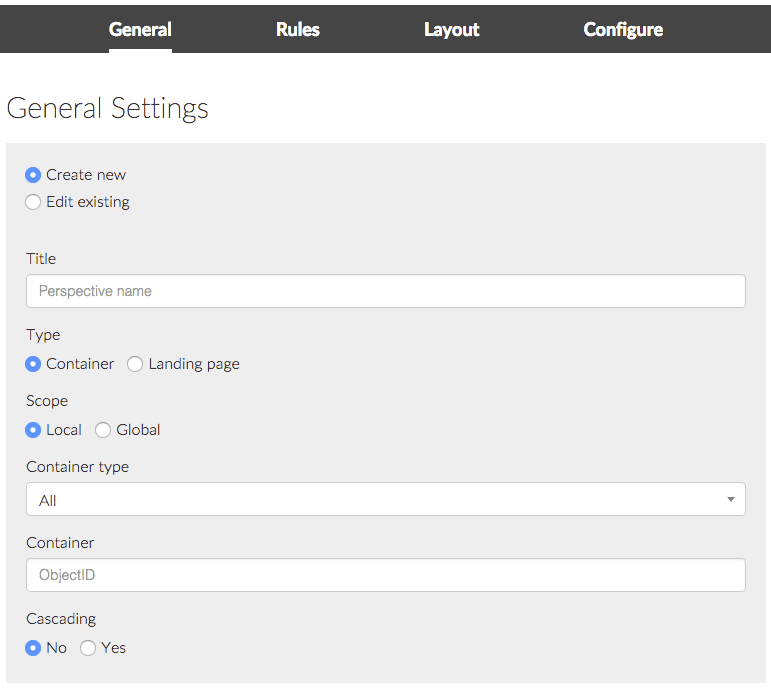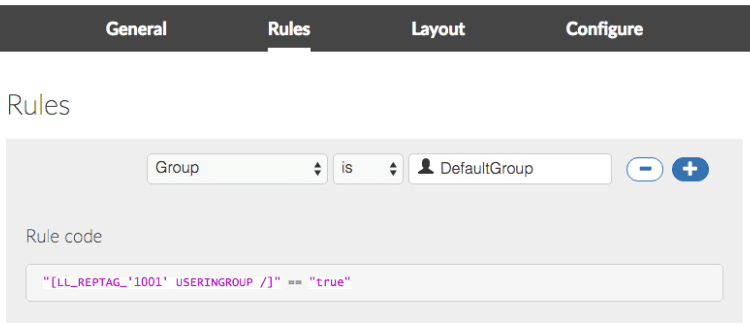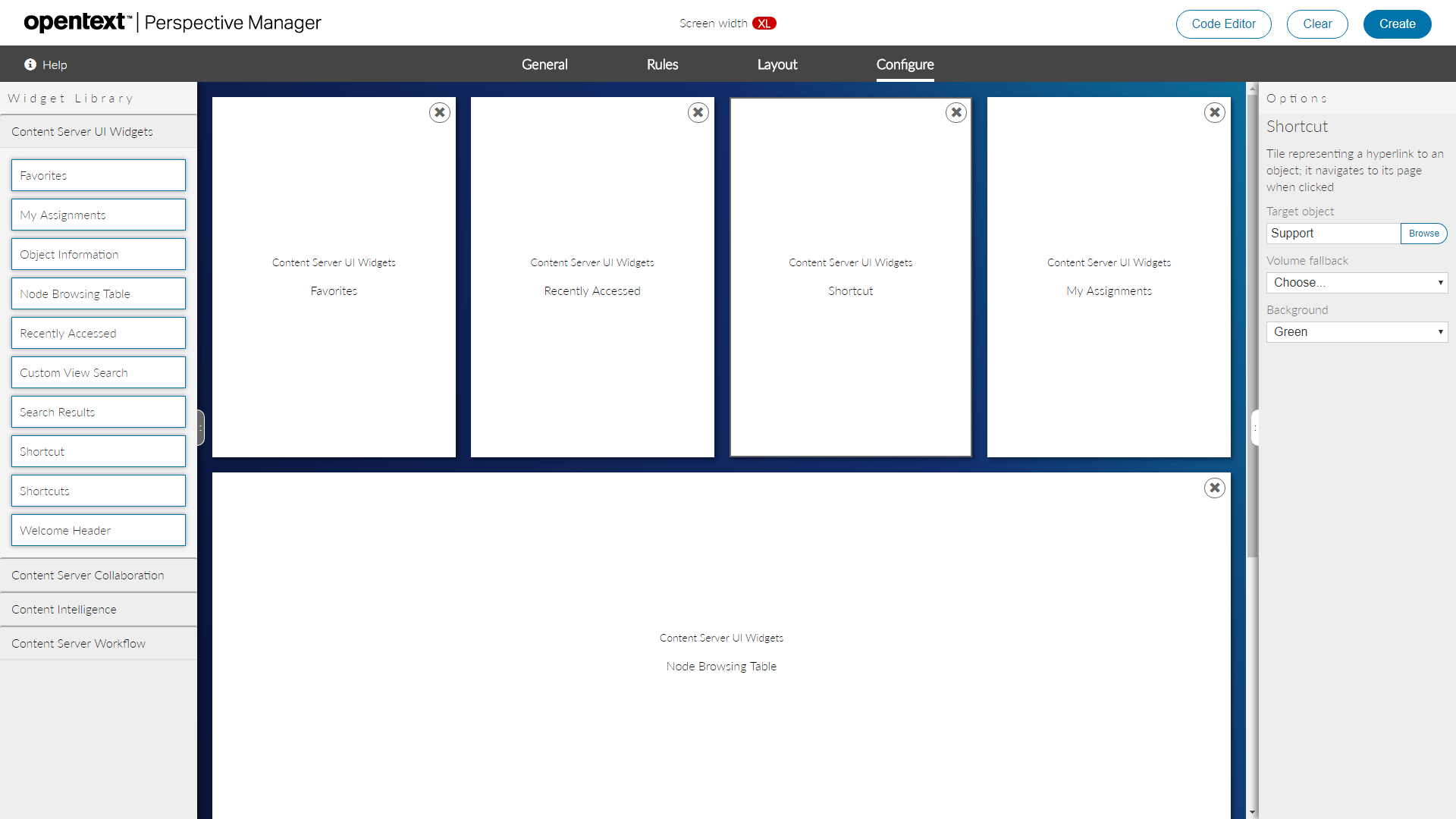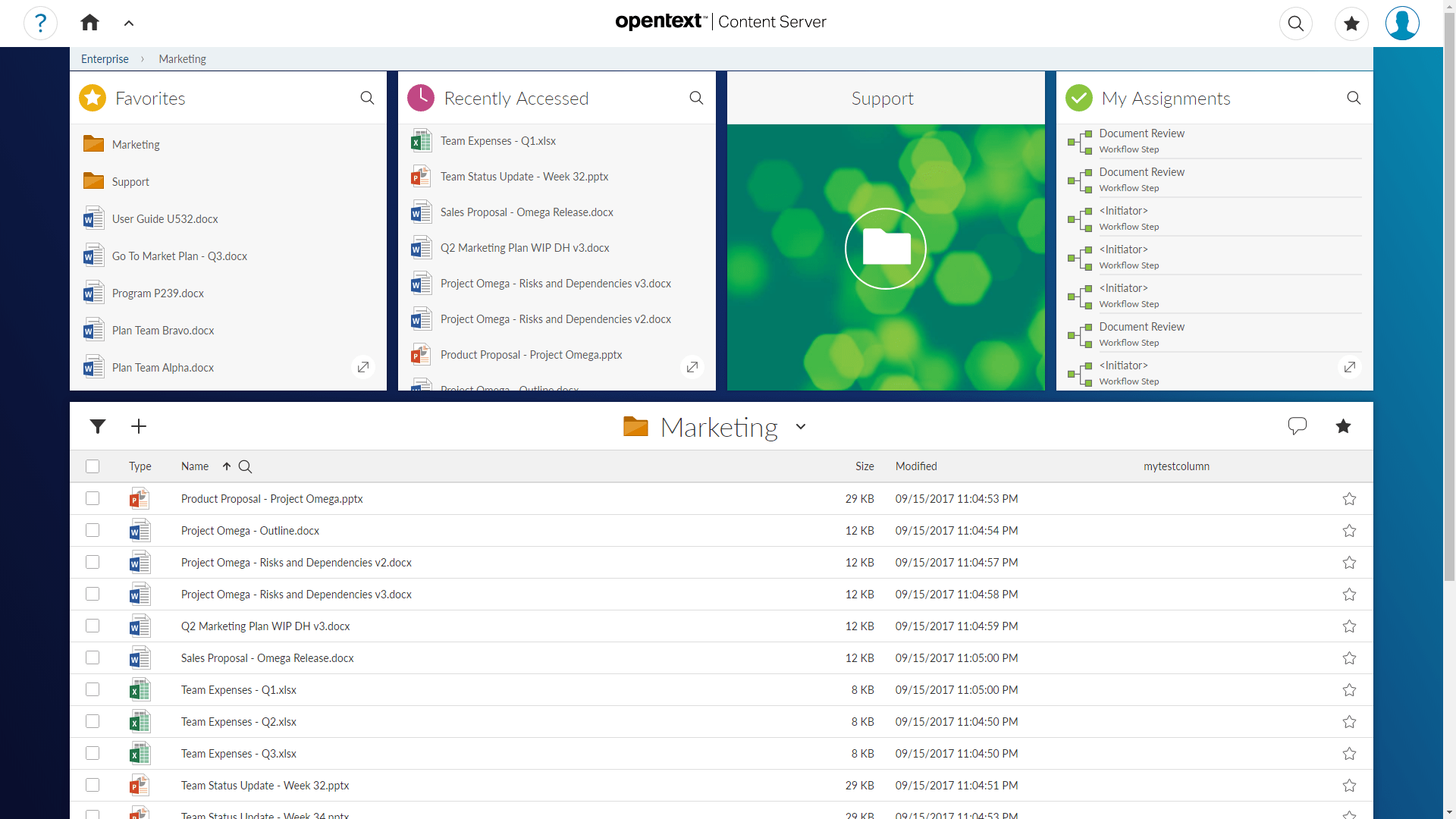Role-based personalization is all about delivering content and functionality that matches the needs of specific job roles, with no effort from the end user. The reason? Different departments and functions often manage and interact with information from very different perspectives. With OpenText™ Content Suite, IT departments can address this by creating information views specific to activities and roles within the organization.
The end result is that the legal team gets a view of all legal-related content, while sales teams see information relevant to orders, account activities, and a holistic view of their customers. Marketing teams can see how people are interacting with their content and track campaign responses, while HR sees current vacancies and the status of recruitment activities.
Creation process (in 5 easy steps)
- Enter the general settings for the perspective, including the title, type, and where it’s applied.
- Enter the specific rules that determine when it should take effect–including the groups that will have access to the role-based perspective.
- Choose a layout behaviour to define how the tiles should re-order when viewed on smaller or larger screens.
- Populate the layout with content widgets. The Content Suite Content Intelligence pack contains libraries of pre-built widgets that can be dragged and dropped into a template to set up different views.The pre-built widgets on the left of the screen can be dragged and dropped into any available template slot in the center to appear as a tile in the finished UI
- Save and try it out.





Many different sources of information can be used by the widgets to appear in the final tiles, including live social media feeds, activity updates, tasks, and visualizations of data. Information is aggregated from different sources together into one view with no coding necessary.
Watch this 2 minute demo video below to see how Content Suite makes it easy for IT to personalize the user interface so different roles and functions are only presented with the information that’s most important to them.
For more information visit opentext.com/ECM.




